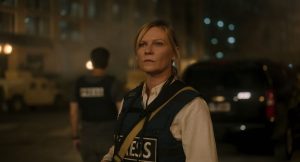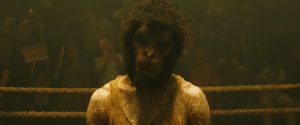Reviews include Irena’s Vow, The Beast, and Before I Change My Mind.
Tricks of the Documentary Trade: The Non-Fiction Twist
November 6, 2014
In The Overnighters, director Jesse Moss captures a major character revelation that dramatically changes how we interpret his subject. Jason Gorber investigates other modes of surprise exposition
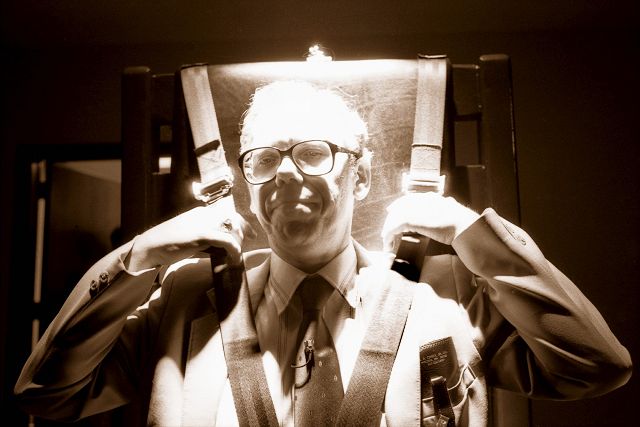 In Errol Morris’ 1999 film Mr. Death: The Rise and Fall of Fred A. Leuchter, Jr., the documentary filmmaker pulls a bit of a trick on his audience. We’re introduced to Leuchter, an expert on execution equipment, and begin to learn about his laudable goal to ensure that a legal procedure is done in the most humane way possible. But there’s quite a radical shift in the film—one that’s telegraphed by Morris’ cheeky title—right about the time we learn that Leuchter also has a sideline gig as a kind of professional Holocaust denier. Once this aspect of his character is revealed, it immediately causes viewers to critically examine the affable musings that the man makes earlier in the film. This kind of “twist” is hardly uncommon in literature, television, or feature films, but they’re relatively rare in the documentary form, because documentaries are films that typically adhere strictly to the subject they set out to illuminate. From O. Henry to The Twilight Zone to the filmography of M. Night Shyamalan, works of fiction hinge heavily upon this type of narrative construction—so much so that audiences often consume these works with the anticipation of the proverbial shoe-drop. At its worst, a twist-heavy piece may exist solely as a result of its gimmicks: take the shtick away, and it all collapses into an uninteresting, unengaging one-off mess. At its best, though, the narrative twist provides a mechanism to explore the contradiction of a character, where the form of the piece reflects the ambivalent nature of its subject. Morris’ Mr. Death does this dance in a particularly elegant way; Morris’ other films, for instance 2010’s Tabloid, can be slightly more heavy-handed with these “gotcha” moments, and a major part of their enjoyment comes from these very cinematic ways of being manipulated. As a first-time viewer, we’re led into one direction only to be startled into another, a feat that through fine storytelling and dexterous editing provides the kind of jolting moment usually reserved for thrillers (yet these Morrisian twists seem, by their very nature, to be less about the subject and more about the filmmaking process itself). Some purists may see this sly “coyness” demonstrated by Morris’ style as “burying the lede,” sliding away from what some see as the pure, journalistic intentions of documentary in order to placate an audience weaned on fiction film. But contrast this with Jesse Moss’ The Overnighters, a film that sets out to document one subject but features a so-called twist that emerges in a very different way. Unlike Morris, Moss was filming his subjects in Williston, North Dakota in real time, spending almost two years documenting the events surrounding the hundreds that have descended on the small town seeking out opportunities in the fracking industry.
In Errol Morris’ 1999 film Mr. Death: The Rise and Fall of Fred A. Leuchter, Jr., the documentary filmmaker pulls a bit of a trick on his audience. We’re introduced to Leuchter, an expert on execution equipment, and begin to learn about his laudable goal to ensure that a legal procedure is done in the most humane way possible. But there’s quite a radical shift in the film—one that’s telegraphed by Morris’ cheeky title—right about the time we learn that Leuchter also has a sideline gig as a kind of professional Holocaust denier. Once this aspect of his character is revealed, it immediately causes viewers to critically examine the affable musings that the man makes earlier in the film. This kind of “twist” is hardly uncommon in literature, television, or feature films, but they’re relatively rare in the documentary form, because documentaries are films that typically adhere strictly to the subject they set out to illuminate. From O. Henry to The Twilight Zone to the filmography of M. Night Shyamalan, works of fiction hinge heavily upon this type of narrative construction—so much so that audiences often consume these works with the anticipation of the proverbial shoe-drop. At its worst, a twist-heavy piece may exist solely as a result of its gimmicks: take the shtick away, and it all collapses into an uninteresting, unengaging one-off mess. At its best, though, the narrative twist provides a mechanism to explore the contradiction of a character, where the form of the piece reflects the ambivalent nature of its subject. Morris’ Mr. Death does this dance in a particularly elegant way; Morris’ other films, for instance 2010’s Tabloid, can be slightly more heavy-handed with these “gotcha” moments, and a major part of their enjoyment comes from these very cinematic ways of being manipulated. As a first-time viewer, we’re led into one direction only to be startled into another, a feat that through fine storytelling and dexterous editing provides the kind of jolting moment usually reserved for thrillers (yet these Morrisian twists seem, by their very nature, to be less about the subject and more about the filmmaking process itself). Some purists may see this sly “coyness” demonstrated by Morris’ style as “burying the lede,” sliding away from what some see as the pure, journalistic intentions of documentary in order to placate an audience weaned on fiction film. But contrast this with Jesse Moss’ The Overnighters, a film that sets out to document one subject but features a so-called twist that emerges in a very different way. Unlike Morris, Moss was filming his subjects in Williston, North Dakota in real time, spending almost two years documenting the events surrounding the hundreds that have descended on the small town seeking out opportunities in the fracking industry.

The Overnighters starts out focusing on one form of moral complication, the very real and pragmatic concerns about providing charity according to church doctrine while still providing a safe, inviting space for congregants to gather. Pastor Jay Reinke is centered as the film’s focal point, as we see as the story develops his own struggles as he must come to terms not only with the conflicts with his community, but within himself. With his film, Moss employs similar techniques that Morris does—teasing slightly the events that are to be revealed, allowing the audience to reflect once certain revelations come to pass. Still, it seems that the film in certain ways provides a more organic way into this kind of shift—its revelation seemingly as much a surprise to the filmmakers as it is to the audience.
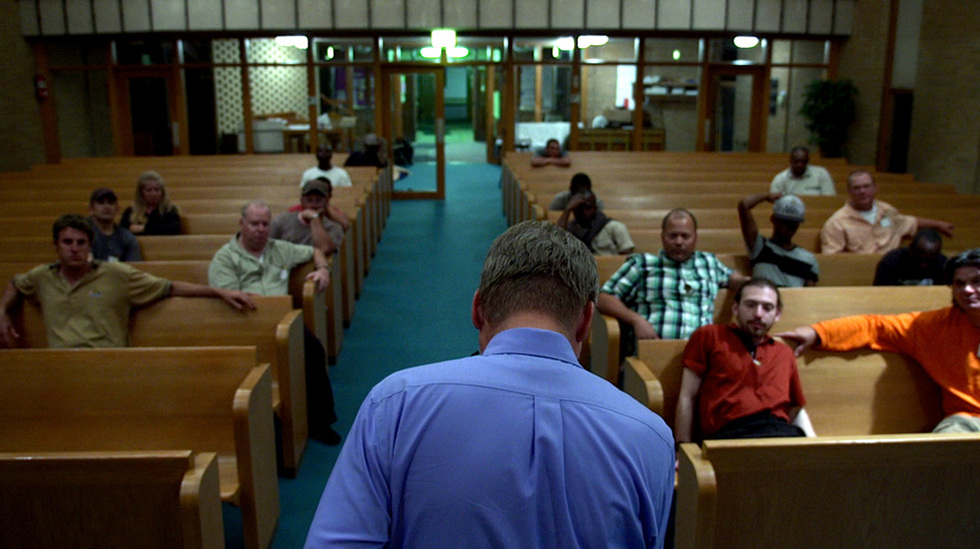
“What I knew early on was that Jay was complicated,” Moss told me in a recent interview. “I knew that in ways that he found he told me that there was more about him than might be necessarily clear on the surface, but not enough for me to really know what that was.” Moss spoke of the challenge of integrating these elements into the film. “In the edit room with my editor and my wife, who is my producer, we talked about [Jay]… if that mystery might ever reveal itself or unravel in the film.” The final reveal to Moss didn’t occur until the Reinke’s Overnighters programme actually closed. “[Jay] told me “I’m going to lose my job,” and he said “but I can’t talk about it,” Moss admitted. Moss held this conversation off camera, and the filmmaker was then put in a position of convincing his subject that this aspect of Jay’s life was now an integral part of the film. “We talked about on the drive back why I thought it was important as a part of the story that I had been telling and that it had a lot to do with the choices he had made to help men for his compassion for broken men,” Moss reveals. “These were things that I thought were profoundly related to everything that had come before in the story that I was telling.”
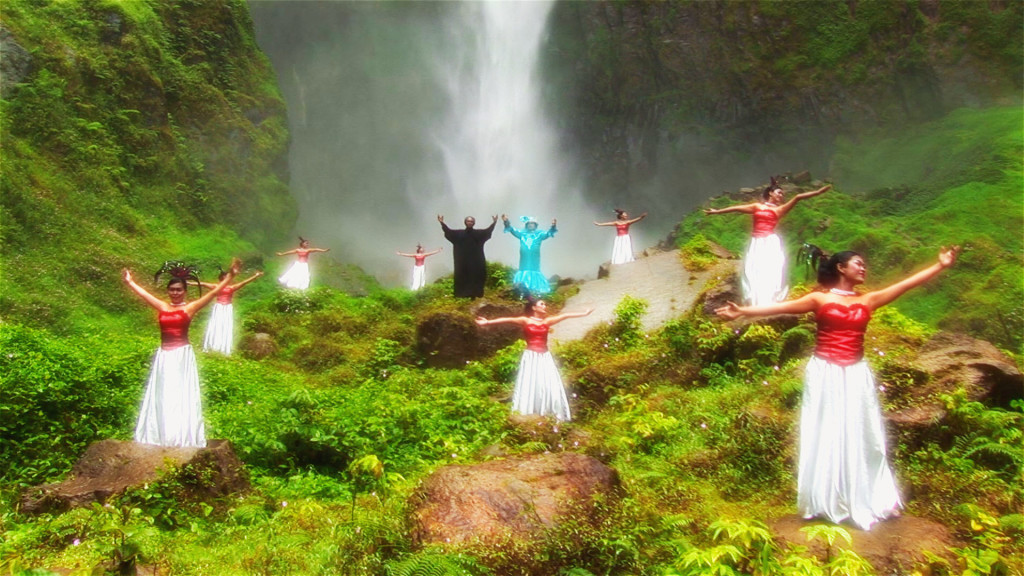
It’s this profound revelation that makes a properly applied twist far more than some gimmick or parlour trick but instead a powerful tool of cinematic storytelling. Take, for another example, the work of Joshua Oppenheimer: his devastating films The Act of Killing and The Look of Silence were born out of a completely different project—about palm plantation workers in Sumatra. Oppenheimer and his collaborators kept hearing about these other stories about the leaders of death squads that still held political power, a seeming tangent or twist from the story at hand that would result in some of the more astonishing moments ever captured for a documentary. Meanwhile, Morris’ twists rely upon a kind of objectivity brought about through time and distance from the events being captured. His films feel like fully-formed narratives that are being told by a wily storyteller, whereas Oppenheimer and Moss take us as an audience to be part of the journey, joining the filmmakers as they discover the scope of their stories. By shooting over many years and following the story rather than their own preconceptions of what they were “meant” to capture, these filmmakers have, in their own way documented truths that otherwise may never have been shared with an audience.


